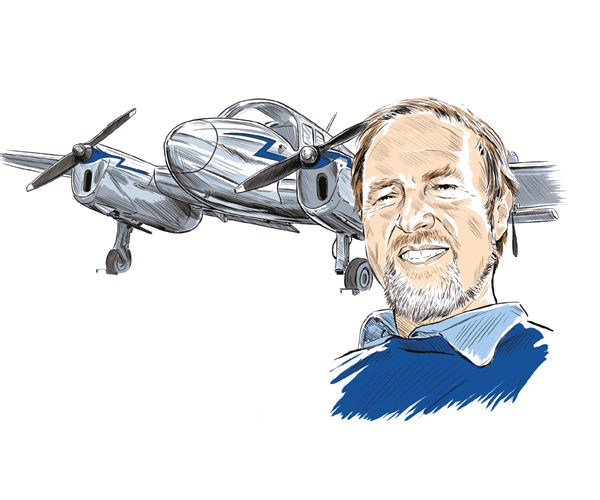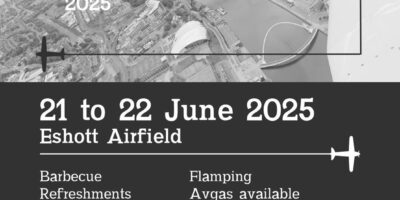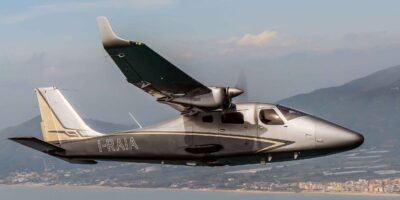You know that moment, when you’re rolling down a short grassy runway, eyes glued to the fence in the distance, hand firmly clasped round the throttle knob like your instructor said you should. It’s the moment when you want another 100hp… The gauge says 2,300rpm but it just feels so sedate… ‘come on, come ooon…’
You have no sense that the venerable 6.3 litre Lycoming is working as hard as it can and that the 74-inch Sensenich, which is bolted to the front is a heavy metal disc of life-threatening energy. Out of sight and out of mind. All you want is more…
I’ve spent a while in Geoffrey’s dynamometer cell, watching a 1970s Ford 2-litre race engine turning at 9,000rpm, and you definitely don’t want to stand close. It’s not the noise of the exhaust which is piped to a silencer outside the wall, but the mechanical noise which is a harsh, shrieking concert of banshees, that and threatening sense of pent-up energy which is something you can feel.
I was reminded of just this only last week. I had tied my Jodel’s tail to my van with a ratchet strap, getting ready to perform the tooth-gritting process, which is running the engine at full power for at least a minute, preferably two.
It’s only the same exercise as rolling down the runway, and if all the bits I’ve assembled round an automotive diesel engine will do that without hesitation or explosion, I can expect them to hold together long enough to get me to 500ft, or preferably 1,000ft. Enough to glide a Jodel back to the field. That said, I was still not prepared for the sheer violence of the whole process. Switch on, clatter the starter and let it rattle away for a while to warm up. After a quiet few minutes, I can’t put it off any longer and I start to wind it up. I notice that the assembled onlookers all take a pace back.
I bounce in the seat for what seems like an age while the tail strains at the strap. I so want to pull the power back before the minute is up rather than wait for two or crank the lever in search of more. I guess all of us were waiting for the huge bang but, explosion came there none…
Maybe it’s more nerve racking because I’ve built it myself, and it’s not proven, yet. Lycomings, Continentals and Senseniches just never explode, even when they go wrong. Maybe it’s because the engine is turning faster, more like Geoffrey’s Ford than Teledyne’s Lycoming…
I have since done the above several times, and I have now flown it, more of which in a while.
But, talking of diesel aircraft engines, these are now slightly more common in the modern era, mainly thanks to Frank Thielert’s original Mercedes A-Class conversion fitted to the Diamond twins (and Robin’s DR401), followed by Diamond’s Austro which is another Mercedes conversion born of the confusion created by Thielert’s bankruptcy and the limbo between that and the acquisition by Continental Motors and eventually Chinese investors (who also own Diamond). With me so far… Despite this apparent variety, there are still very few diesels in the air, but diesels in general aren’t new.
“After a quiet few minutes, I can’t put it off any longer and I start to wind it up. I notice that the assembled onlookers all take a pace back”
Packard was the first to fly one in 1929 and on 28 May 1931, a Bellanca CH-300 fitted with a 225HP Packard DR-980, stayed airborne for 84 hours and 32 minutes, a record which endured until broken 55 years later by the Rutan Voyager.
Across the pond, Bristol Aeroplane Company modified one of its Jupiter radials for compression ignition in the late 1920s to create the Phoenix which in supercharged form was fitted to a Westland Wapiti biplane to set an altitude record of 27,453 ft (there’s a picture of it just above Everest) in May 1934, where its frugal use of fuel allowed it a long time to get there.
In Germany, BMW dieselised a licence-built Pratt and Whitney radial and Junkers built the 700hp opposed-piston Jumo which saw service before and during the conflict.
Like the Packard Bellanca, all of them made good use of the compression ignition engine’s more modest appetite for gas oil. The one that has really piqued my interest though is the Klöckner-Humboldt-Deutz, air-cooled eight-cylinder two-stroke diesel radial of 1937.
It was the brainchild of Adolf Schnürle, the German genius who developed a system of porting which created a loop of gas in the cylinder and helped both to exhaust the spent charge and pull in the fresh one.
His DZ700 ran successfully and led to a six-cylinder version intended for a fleet of trainers but development was paused because of the war.
The headline then, is… that the DZ700 produced 158hp at 2,800rpm from 245 cubic inches (an O-245 then…), measured three feet in diameter, weighed 120lb and could run on AVTUR, or used fish and chip oil, or if you must, road diesel at £1.70 a litre. And yes, you read that correctly… 120lb is 55kg and the Rotax 912ULS, which is considered the lightest of the general current aviation powerplants weighs exactly the same for half the power, and it needs a radiator.
Schnürle’s DZ 700 apparently still exists somewhere in Germany, but where’s the damn thing when we need it… Like NOW. It would look very cool indeed behind a bumpy cowl on the nose of a Jodel. Wonder if there’s any drawings anywhere…







